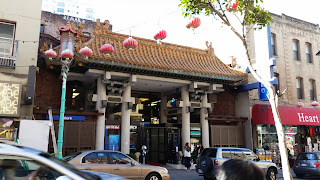I'm back at Western after a wonderful winter break with my family in Vancouver.
Some general house-keeping:
In my first week back, I've been doing some general "house keeping" with my data. I'm getting myself organized by deleting duplicate and unwanted files from awry processing. I think it is a common problem: if you are trying a new tool in ArcGIS, are processing a new dataset, or input the wrong variable, you get erroneous files. I know that at least for me, these mistakes can sometimes get ignored as I'm too focused on "getting it right", and these can clutter up folders with the good data. I'm getting rid of these, and also making sure everything is labeled so data is easy to find and folders are easy to navigate.
On a tangent, it is also important to make sure you have good "metadata" or data about your data. For the RADARSAT-2 images I'm working with, I make sure to include notes about the number of looks in the azimuth and range directions when doing multilook processing. This lets me know how smoothed over my images are. The numbers of looks are different depending on the end products. For example, CPR images tend to be very noisy, so I use more looks for CPR images than when I'm performing a Pauli Decomposition. It is important that I, and anyone else who may need to look at my files, know what I did, so I'm working on making a key that explains my data.
At AGU in December, one of the workshops I attended during the Student & Early Career Scientists Conference focused entirely on "Improving Your Science Through Better Data Management", and I learned a few tricks that I'm starting to implement. Not that you need any convincing, but here is a cute cartoon they shared that further emphasizes why data management is important, especially when you might need to share data with other scientists.
Moving forward - Acquiring PALSAR data:
My data management is being done now to prepare for the incoming of new data! Yay, new data!
I have recently put in a request to the Alaska Satellite Facility to get data from the Japan Aeronautics Exploration Agency's Advanced Land Observing Salilite (ALOS). ALOS had an L-band radar, called PALSAR. Like RADARSAT-2, PALSAR also has fully polarimetric capabilities. The two radars have different wavelengths. RADARSAT-2 is a C-band radar, with a wavelength of 5.5 cm, while PALSAR's L-band has a wavelength of 23.6 cm. We can use both datasets together to explore the surface roughness at different scales. For example, surfaces that look rough in C-band radar may appear rough in L-band radar, and vice versa. Comparing apparent roughness at different scales from the two different radar instruments can help us constrain the scale of surface roughness of the salt diapirs on Axel Heigberg Island.
I'm a little disappointed that there isn't very much PALSAR quad-pol coverage of our study site in Expedition Fiord, but it does look like at least a couple prominent diapirs are covered, so we will focus on those.
Batch Processing:
It was brought to my attention that I can really speed up radar data processing by implementing "batch processing" i.e., doing multiple images at once. This will be really useful when the PALSAR data comes in, so I'm testing it out with my RADARSAT-2 images in SNAP. So far I have not succeeded, but I've only just started playing around and troubleshooting.
Maybe some basic programming will help with that, speaking of which...
Developing computer skills:
One of my colleagues here at Western, Denis Vida, has put together an informal, non-credit Python Immersion course/workshop. My programming abilities are wanting, and if you remember from before I can barely navigate a command line, (barely, but I can!😊) My previous Python experience is limited to completing the Codecademy online course, most of which needs much refreshing. Fortunately, Denis has referred us to a free, online tutorial on computer programming through Udacity that I am going through to get up to speed. Looking through the e-mailing list for the workshop, it looks like I will be in good company with most of my labmates also attending.







